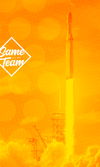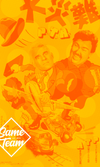Creativity thrives when chaos gets a game plan.
Chaos vs. clarity in brainstorming
or decades, brainstorming was the Wild West of problem-solving—a free-for-all where teams tossed ideas around and hoped something brilliant would stick. While this approach might occasionally yield a gem, more often than not, it left teams drowning in scattered thoughts and unfinished plans.
The reality? Chaos isn’t a creativity booster; it’s a creativity blocker.
Structured brainstorming, on the other hand, strikes the perfect balance between creative freedom and focused execution. By giving creativity a framework, it ensures ideas are not just generated but nurtured, refined, and—crucially—acted upon.
How structure fosters innovation
Innovation isn’t about having more ideas; it’s about turning the right ideas into actionable solutions. Structured brainstorming makes this possible by providing the clarity and order teams need to do their best thinking.
Here’s how structure fuels innovation:
- Encouraging diverse input: Techniques like round-robin sharing or brainwriting ensure everyone has a voice, not just the loudest or most extroverted team members.
- Preventing idea loss: Tools like digital whiteboards or shared documents capture ideas in real-time, so nothing slips through the cracks.
- Focusing on outcomes: Clear goals keep discussions anchored to team priorities, turning abstract ideas into tangible solutions.
From scattered ideas to focused solutions
Let’s look at how structure transforms brainstorming into real results.
A product development team at a software company faced a major challenge: improving user engagement. Their initial brainstorming sessions were free-flowing and energetic—but produced little more than a chaotic jumble of ideas. No one knew where to start, and progress stalled.
Then they introduced a structured approach:
- They defined a clear goal: “How can we increase user retention by 20%?”
- Used breakout groups: Smaller groups tackled specific angles of the problem, generating targeted insights.
- Evaluated ideas systematically: A prioritization matrix helped the team assess feasibility and impact.
The result? A streamlined roadmap of actionable solutions that boosted user retention by 18% within six months. Structure didn’t stifle their creativity—it gave it direction.
Why structure doesn’t stifle creativity
There’s a common misconception that structure kills creativity. But in reality, it’s the opposite.
Structure provides the psychological safety teams need to experiment boldly. Instead of floundering in ambiguity, team members know the boundaries they’re working within—and that frees them to push those boundaries without fear of derailing the process.
With structure:
- Big ideas are celebrated, not shot down prematurely.
- Collaboration is easier because everyone’s playing by the same rules.
- Teams stay energized, knowing their efforts are building toward something meaningful.
Practical techniques for structured innovation
If you’re ready to introduce structure to your brainstorming sessions, start with these tried-and-true methods:
- Brainwriting: Instead of verbal brainstorming, have team members write down their ideas silently. Then share, discuss, and build on them. This levels the playing field and encourages thoughtful contributions.
- SWOT analysis: Evaluate ideas by analyzing their Strengths, Weaknesses, Opportunities, and Threats. This ensures every idea gets a fair and balanced assessment.
- Timeboxing: Allocate specific time blocks for each phase of brainstorming—idea generation, discussion, evaluation—to keep sessions focused and productive.
The cultural shift of structured brainstorming
Structured brainstorming doesn’t just improve brainstorming sessions—it creates a ripple effect that transforms team culture.
Here’s what teams often experience:
- Improved morale: When everyone has a chance to contribute, they feel valued and engaged.
- Stronger collaboration: Clear roles and processes reduce friction, making teamwork smoother and more enjoyable.
- Greater adaptability: With a reliable framework in place, teams are better equipped to tackle complex challenges and pivot when needed.
Over time, structured brainstorming becomes more than a tool—it’s part of how the team works, thinks, and innovates.
T L ; D R — Structured brainstorming isn’t about restricting creativity—it’s about unlocking it. By giving teams the tools and processes to think deeply and collaborate effectively, organizations can move from scattered ideas to transformative solutions.
Whether you’re solving a tough problem or dreaming up your next big idea, structured brainstorming ensures your team’s creativity doesn’t just spark—it shines.







